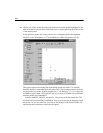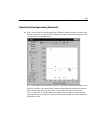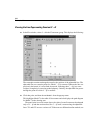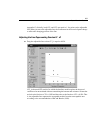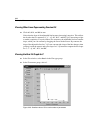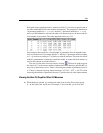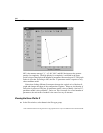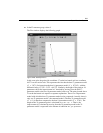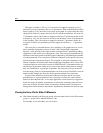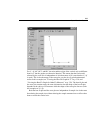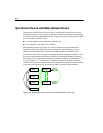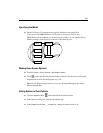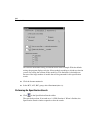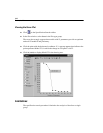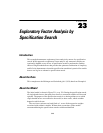
342
Example 22
The figure on either p. 338 or p. 341 can be used to support a heuristic point of
diminishing returns argument in favor of 17 parameters. There is this difference: In the
best-fit graph (p. 338), one looks for an elbow in the graph, or a place where the slope
changes from relatively steep to relatively flat. For the present problem, this occurs at
17 parameters, which can be taken as support for the best 17-parameter model. In the
scree plot (p. 341), one also looks for an elbow, but the elbow occurs at 18 parameters
in this example. This is also taken as support for the best 17-parameter model. In a
scree plot, an elbow at k parameters provides support for the best ( ) parameter
model.
The scree plot is so named because of its similarity to the graph known as a scree
plot in principal components analysis (Cattell, 1966). In principal components
analysis, a scree plot shows the improvement in model fit that is obtained by adding
components to the model, one component at a time. The scree plot presented here for
SEM shows the improvement in model fit that is obtained by incrementing the number
of model parameters. The scree plot for SEM is not identical in all respects to the scree
plot for principal components analysis. For example, in principal components, one
obtains a sequence of nested models when introducing components one at a time. This
is not necessarily the case in the scree plot for SEM. The best 17-parameter model, say,
and the best 18-parameter model may or may not be nested. (In the present example,
they are.) Furthermore, in principal components, the scree plot is always monotone
non-increasing, which is not guaranteed in the case of the scree plot for SEM, even with
nested models. Indeed, the scree plot for the present example is not monotone.
In spite of the differences between the traditional scree plot and the scree plot
presented here, it is proposed that the new scree plot be used in the same heuristic
fashion as the traditional one. A two-stage approach to model selection is suggested.
In the first stage, the number of parameters is selected by examining either the scree
plot or the short list of models. In the second stage, the best model is chosen from
among those models that have the number of parameters determined in the first stage.
Viewing the Scree Plot for Other Fit Measures
E With Scree selected in the Plot type group, select the other choices in the Fit measure
group: C – df, AIC, BCC, and BIC (but not C / df).
For example, if you select
BIC, you will see this:
k 1–



